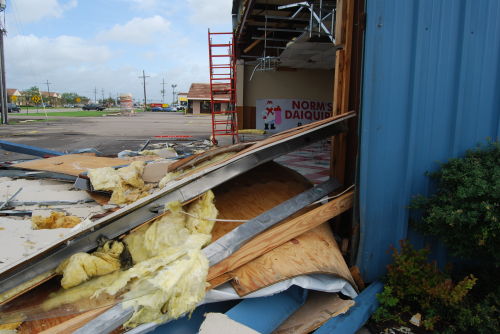
Lafourche officials urge storm prep
June 11, 2013St. Mary readies for storm season
June 11, 2013Vulnerable segments of the Kraemer-Bayou Boeuf protection levee system have been bolstered, and the procurement of new pumps to displace water from inside the system is ongoing one year after a precarious flood threat was largely thwarted, parish officials said.
Hurricane Isaac rainwater drainage converged on Kraemer last year and worsened days after the storm passed. Short-term solutions are being enacted and long-term plans are being developed to protect against a repeat, the officials said.
National guardsmen, sheriff’s office deputies, inmate trustys, public works employees and residential volunteers were summoned to Kraemer, planting sandbags throughout the night to stem Isaac’s lingering threat.
Isaac’s storm surge had slowed regional drainage southward, funneling water against and, briefly, over portions of 4-foot-high protection levees in the Kraemer and Bayou Boeuf region.
“Wherever we had to apply sandbags for that last time that it was close, we went back and recapped levees in those low spots and built them back up already,” said Councilman Michael Delatte, who represents the region.
That water from the north and south met in north Lafourche is indicative of a new reality drainage gurus must grapple with as protection systems erected east of Lafourche Parish funnel water west, Delatte said.
The North Lafourche Conservation, Levee and Drainage District, through the formation of a special committee, is spearheading plans to significantly heighten the ring levee system that protects the region.
The district has labeled the current levees insufficient and is planning to lift the levees a couple of feet and remove trees that are rooted in their foundation, though the district’s chief concedes it may take years to reach the ultimate goal because of the arduous permitting process and funding shortfalls.
“This is an effort to sharpen some focus in that particular area,” NLCLDD Executive Director Dwayne Bourgeois said of the Choupic-St. James-Lake Boeuf Watershed Project Area. The levee district acquired the Ward Six area in 2006 and has identified several projects after running hydrology studies to pinpoint the problems, he added.
In House Bill 2, which has passed the state Legislature and hinges upon Gov. Bobby Jindal’s signature, the state granted the levee district $145,000 in priority-two capital outlay funding.
Some of that money would be used to pay for engineering services related to the Zeller-Larousse Forced Drainage Area, the 420-acre system Isaac most threatened, Bourgeois said. The project, which would address road embankments and recapping and reshaping the system, is ultimately estimated to cost $1.6 million.
During Isaac, the overtopping of levees was intensified because water was already encroaching homes inside the protection system due to installed pumps’ inability to quickly displace water.
Three new pumps are planned for the area: An electrical pump near Bayou Boeuf Elementary that failed when the region lost power will be replaced with a larger natural gas pump; a pump run by antiquated technology in the Zeller station will be replaced; and a new pump will be installed at the Larousse station, Delatte said.
“We don’t have the funding in place yet for those pumps,” said Kerry Babin, director of Public Works. “That capital outlay funding needs to be established (before the work can be done). … It’s a continuous, evolving process to upgrade the pump stations.”
The parish does have portable pumps it can deploy in susceptible areas as storms approach, he added.
Babin said the parish will continue to recap the levees in weak portions to help defend against rising waters, but rainy weather over the past few months has made it too risky to operate heavy equipment on the levees.
Despite the remedial efforts so far, current water levels mean a storm similar to Isaac could pose a greater threat this season, Delatte said.
“The last hurricane, the swamps were dry. By the time it filled up all the swamps and retention areas, the storm had passed and was gone,” Delatte said. “Right now, the swamps have water in them. … You’re losing that little window, that little extra help. If you got a good southeast wind right now with any kind of a storm, that water is just going to get higher faster.
“I’ve never seen Bayou Lafourche as high as it is right now.”










